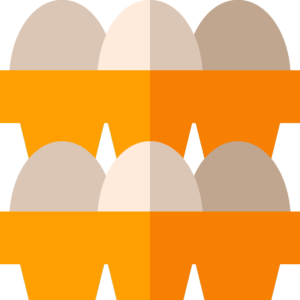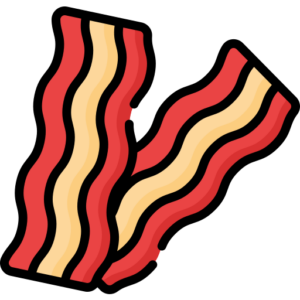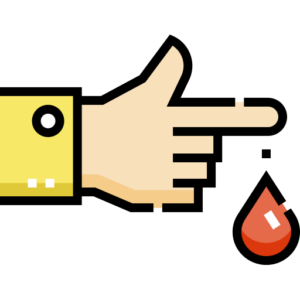A low-carb meal plan may be your key to losing weight.
Low-carb diets have become increasingly popular, with some people claiming that weight loss can become practically effortless when going low-carb.
However, these diets aren’t for everyone. Here, we’ll go over some pros and cons of low-carb dieting and provide a simple low-carb meal plan for weight loss.
What is a Low-Carb Meal Plan?

A low-carb meal plan limits foods that contain carbohydrates, including fruits, vegetables, grains, dairy and sweets.
That said, there’s no universal definition of what makes a low-carb meal plan.
Any diet that contains fewer than 45% of calories from carbohydrates could technically be considered low-carb, but most popular low-carb diets contain no more than 25% of calories from carbs (125 grams per day on a 2,000-calorie diet) (1).
It’s not always necessary to calculate your daily carb needs on a low-carb diet, though. You may see great results just by avoiding carb-heavy foods like sweets, bread and pasta without counting carbs or calories.
Compared to other diets, low-carb meal plans cause more rapid weight loss in the beginning. This is because the body sheds water weight as it burns stored carbohydrates.
There’s some evidence that rapid early weight loss promotes long-term success. However, other studies have found that slower weight loss may be more effective over time (2).
Keep in mind that you’ll regain water weight if you increase your carb intake. But, as long as you’re able to stick with the diet beyond the first few weeks, you’ll start to shed some body fat.
If you’re concerned about the possibility of regaining a few pounds, it’s best to consider whether you’ll be able to follow a low-carb diet long term before trying one.
There is good news for carb lovers, though: Low-fat diets, intermittent fasting and other approaches that create a calorie deficit may be just as effective in the long run (3).
Low-Carb High-Protein Meal Plan

There are a couple of advantages to replacing carbs with protein.
Weight loss comes down to eating fewer calories than you burn, regardless of the diet you follow. Like carbs, protein provides 4 calories per gram. This means you’d take in no extra calories if you replaced, say, 50 grams of carbs with 50 grams of protein.
That’s not to say that you’ll actually eat equal amounts of protein, though. Many people find protein to be more satiating than carbs and will therefore eat fewer calories overall (4).
What’s more, small studies suggest that high-protein diets slightly boost the metabolic rate, but larger studies are needed to confirm this (5, 6).
However, there can be a downside to eating a high-protein diet, depending on the type of protein you consume.
Notably, one large study has linked a high intake of animal protein with increased risk for early death. However, this risk was mostly seen in people who were overweight or obese, smoked or who drank large amounts of alcohol (7).
For this reason, it’s best to incorporate some plant-based proteins—like nuts, tofu and tempeh—on a low-carb high-protein meal plan.
Low-Carb High-Fat Meal Plan

A different approach is to eat mostly fats in place of carbs.
The ketogenic diet is one popular low-carb high-fat meal plan. The standard keto diet provides around 75% of calories from fat, 20% of calories from protein and 5% of calories from carbs.
Less extreme approaches will include higher amounts of carbs and less fat.
Keep in mind that fats contain 9 calories per gram, which is more than twice the calories per gram of carbohydrate.
Some people find that high-fat diets suppress the appetite, but this varies from person to person. Low-carb high-fat diets could cause weight gain among people who don’t get full from eating fats (8).
Summary: Low-carb meal plans replace bread, rice, sweets and other carb-rich foods with proteins and fats. Many people eat fewer calories on low-carb diets due to the satiating effects of protein and fat, and this leads to weight loss. Low-carb diets also promote rapid early weight loss, which some people find motivating. However, low-carb diets can still cause weight gain if you eat too many calories.
Low-Carb Diet for Diabetes

People with diabetes may find a low-carb diet to be effective for weight loss.
Diabetes is a chronic disease that causes high blood sugar levels.
Blood sugar levels are mostly determined by carbohydrate intake. Carbs are broken down into sugars in the body, with higher carb foods causing bigger spikes in blood sugar. In theory, low-carb diets make sense for people who need to lower blood sugar levels.
Several short-term studies support this idea (9, 10, 11, 12).
For example, in one study of 78 adults with type 2 diabetes, half of the participants followed a diet consisting of 53% of calories from carbs, and the other half followed a diet consisting of 14% of calories from carbs.
Each participant reduced total daily calorie intake by 30% and participated in regular physical activity.
After one year, participants in the low-carb group saw more significant improvements in weight loss, fat loss, insulin resistance, triglycerides and HDL (“good”) cholesterol. The low-carb group also had more stable blood sugar and was better able to lower their dosage of diabetes medications.
Notably, though, both groups saw improvements in body weight, blood sugar control and cardiovascular risk (13).
This makes sense, given that weight loss generally improves outcomes for many people with diabetes.
Keep in mind that low-carb diets aren’t right for all people with diabetes. Those who use insulin should speak with their doctors before drastically reducing carbohydrate intake to lower the risk for dangerous dips in blood sugar.
Summary: Carbohydrate intake is a key determinant of blood sugar levels because carbs break down into sugars in the body. Studies indicate that low-carb diets lower blood sugar and insulin resistance and improve cholesterol and triglycerides in overweight adults with diabetes. However, many of these positive outcomes are related to weight loss rather than low-carb diets, specifically.
A Simple 7-Day Low-Carb Meal Plan

This 7-day low-carb meal plan sample simply eliminates foods that are high in carbs, rather than aiming for a specific number of carbohydrates per day.
Sweetened beverages and alcohol should be avoided on this plan. Choose water, black coffee or unsweetened tea instead.
Day 1
- Breakfast: 1 scoop vanilla whey protein powder blended with 1 cup berries, 2 tablespoons peanut butter, 2 handfuls of spinach, and 1 cup milk
- Lunch: Mixed greens topped with cucumber, tomato, green peppers, grilled chicken breast, olive oil, and lemon juice
- Dinner: Baked tofu over cauliflower rice with light soy sauce
- Snacks: 1 ounce (approx 30g) of almonds, 1 light string cheese
Day 2
- Breakfast: 2 scrambled eggs with ½ medium avocado
- Lunch: 3 ounces deli turkey and 1 slice cheese wrapped in a bibb lettuce leaf, dipped in mustard
- Dinner: Zucchini lasagna rollups
- Snacks: 1 cup melon, 2 tablespoons peanut butter
Day 3
- Breakfast: 1 cup cottage cheese with 1 tablespoon chopped walnuts, sprinkled with cinnamon
- Lunch: Baked tofu and cauliflower rice (leftovers from day 1)
- Dinner: Shrimp, asparagus and pesto skillet
- Snacks: Turkey or salmon jerky, 1 ounce mixed nuts
Day 4
- Breakfast: 1 cup plain Greek yogurt with 1 cup pineapple cubes and 1 ounce walnuts
- Lunch: Zucchini lasagna rollups (leftovers from Day 2)
- Dinner: Turkey burger with cheese in a lettuce wrap, green beans
- Snacks: 1 hard boiled egg, celery sticks with 2 tablespoons peanut butter
Day 5
- Breakfast: Tofu scramble, 1 cup berries
- Lunch: Mixed greens topped with 1 cup berries, 1 ounce pecans, grilled chicken breast, olive oil and balsamic vinegar
- Dinner: Zucchini noodles or shirataki noodles (sometimes called Pasta Zero) topped with lean ground beef, tomato sauce and Parmesan cheese
- Snacks: 1 medium bell pepper cut into strips, 2 tablespoons hummus, 1 hard boiled egg
Day 6
- Breakfast: Breakfast fried cauliflower rice
- Lunch: Egg roll in a bowl
- Dinner: Cheesy stuffed poblanos with ground turkey
- Snacks: Cucumber slices dipped in guacamole, 1 cup berries with 2 tablespoons peanut butter
Day 7
- Breakfast: Egg muffins
- Lunch: 1 can tuna in water mixed with 1 medium mashed avocado
- Dinner: Salsa simmered fish over cauliflower rice
- Snacks: 1 ounce (approx 30g) cheese, 1 ounce almonds
Should You Try a Low-Carb Diet Meal Plan?
A low-carb diet is one of several effective approaches for weight loss.
There’s no magic to it, really. People who lose weight on low-carb diets often do so because they’re simply eating fewer calories.
This is because proteins and fats are often more satiating than carbs.
The good news is, you don’t necessarily need to obsessively count carbs.
There are a couple of ways to start a low-carb meal plan, but the easiest is to remove bread, rice, pasta, sweetened beverages and other foods that are high in carbohydrates.
This approach promotes rapid early weight loss because the body sheds water weight as it burns stored carbohydrates.
Weight loss slows down after the first week or so, but you’ll continue to lose fat as long as you’re able to commit to the diet.
Just keep in mind that you’ll likely regain a few pounds (in water weight) if you increase your carb intake. For this reason, low-carb diets aren’t for everyone.
People who can’t stick with it long-term will see fluctuations in weight, mostly due to water weight.
If Once you’re ready to give it a try, it’s best to get your doctor’s approval if you have any serious health conditions like diabetes.
Overall, low-carb diets are safe and effective for many people seeking weight loss.
